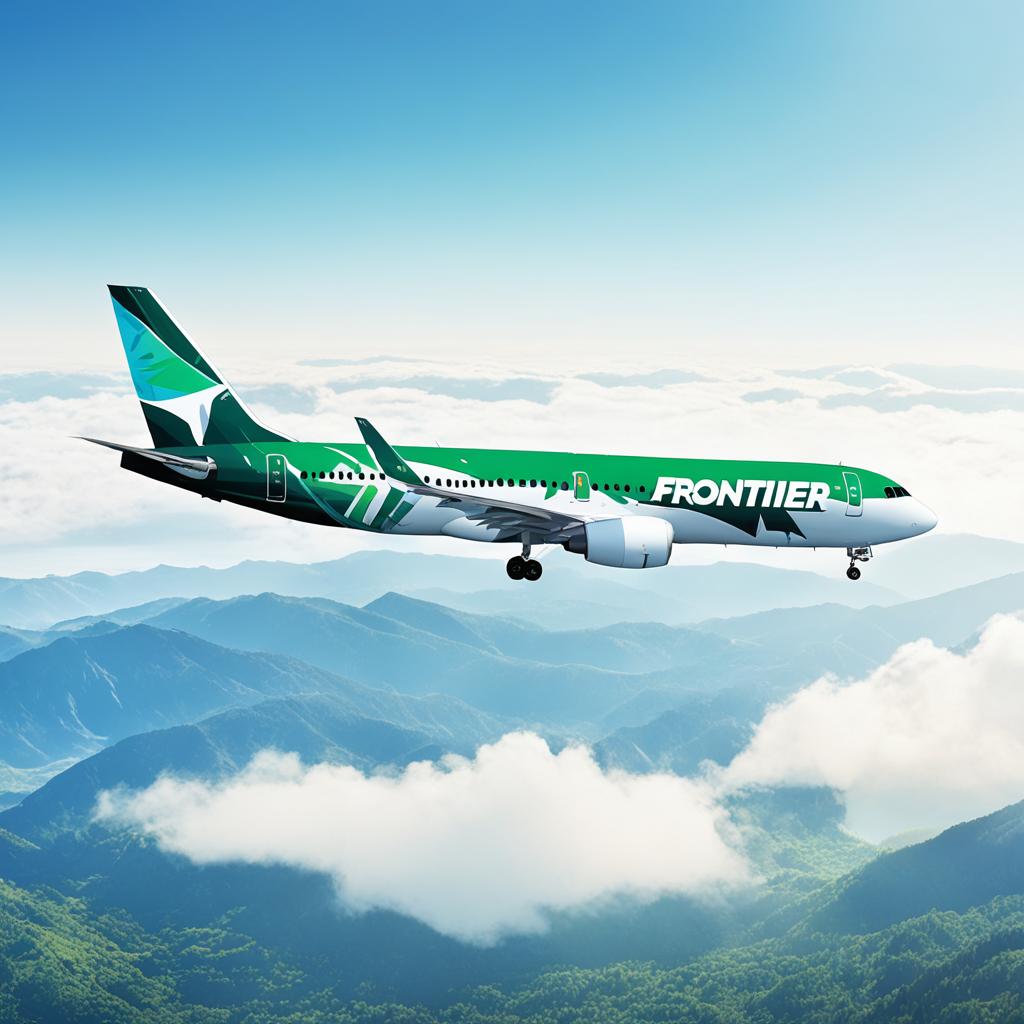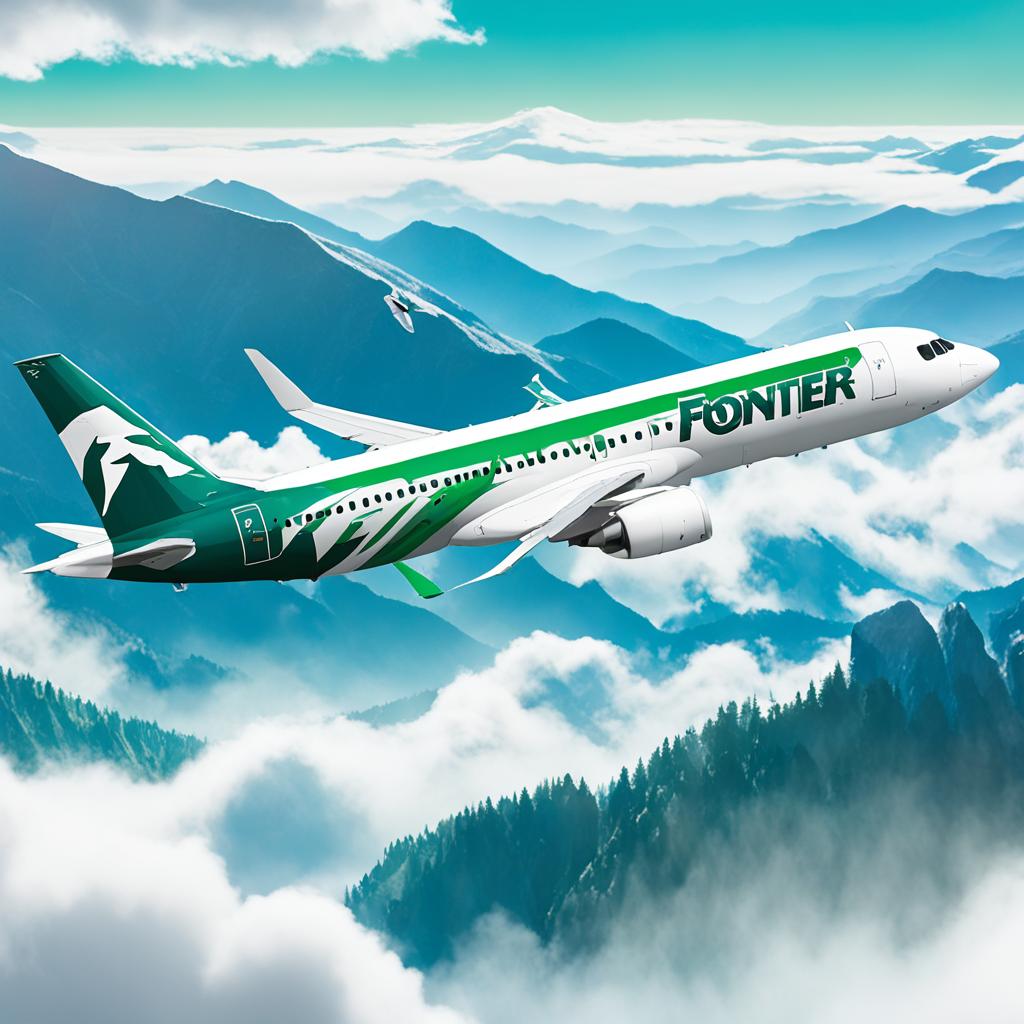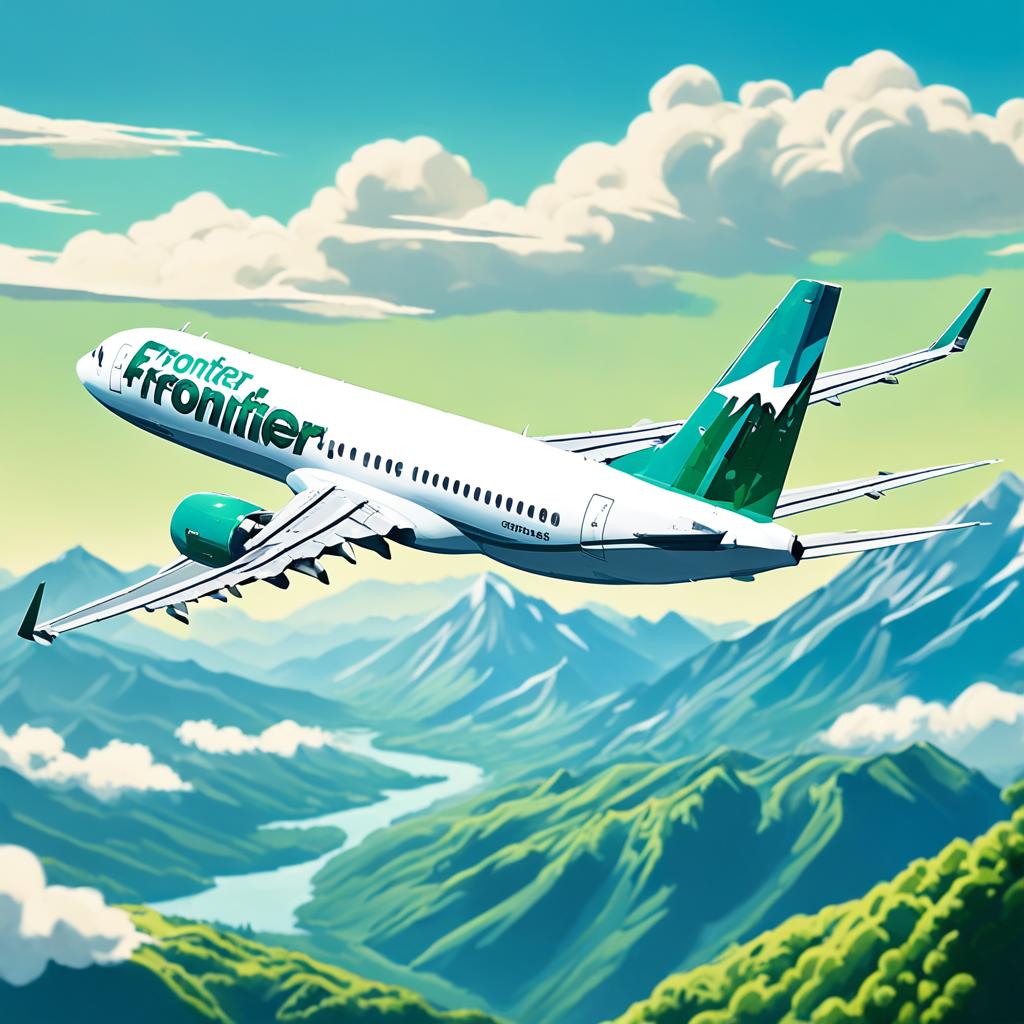When it comes to airlines, there are various categories that define their operations and scope. One such category is regional airlines, which typically operate on behalf of larger mainline carriers, flying smaller aircraft on low-density routes. But where does Frontier Airlines fit into this framework? Is Frontier considered a regional airline, or does it have a different role in the industry?
As a major ultra-low-cost carrier based in Denver, Colorado, Frontier Airlines operates flights to over 100 destinations throughout the United States and internationally. Known for its affordability and extensive route network, Frontier is often associated with the low-cost model. However, it’s important to note that Frontier does not fit the traditional definition of a regional airline.
Unlike regional airlines that fly under the livery and brand of mainline carriers, Frontier operates independently and has its own fleet of aircraft. While it does have codeshare agreements with other regional airlines for certain routes, it primarily operates its flights under its own name. This allows Frontier to maintain its own branding and provide a consistent experience to its passengers.
So, what is Frontier Airlines’ unique position in the industry? How does it contribute to the accessibility of air transportation? In the following sections, we’ll explore Frontier’s role in the airline industry and shed light on its significance as a major ultra-low-cost carrier.
Frontier Airlines Overview

Founded in 1994, Frontier Airlines is a subsidiary and operating brand of Indigo Partners, LLC. With a fleet size of 135 aircraft, the airline serves 85 destinations, both within the United States and internationally. What sets Frontier apart is its ultra-low-cost model, which offers affordable fares to budget-conscious travelers. By charging additional fees for extras such as seat selection and carry-on baggage, Frontier is able to pass on savings to its customers.
Frontier primarily operates flights within the United States, connecting major cities to smaller regional airports. However, the airline also serves international destinations, expanding its reach and providing a diverse range of travel options. Conveniently located at Denver International Airport, Frontier’s main hub allows for seamless connections to various destinations nationwide. Additionally, the airline has established several focus cities across the country, further contributing to its extensive network.
When flying with Frontier, passengers can expect an efficient and comfortable journey with no-frills service. The airline focuses on offering reliable transportation at affordable prices, allowing customers to choose add-ons based on their individual preferences. This unique approach has made Frontier Airlines a popular choice for travelers seeking cost-effective options without compromising on safety or quality.
Frontier Airlines Destination Map
| Region | Destinations |
|---|---|
| Domestic | Atlanta, Chicago, Denver, Las Vegas, Los Angeles, Miami, New York, Orlando, San Francisco, Washington, D.C., and more |
| International | Cancun, Punta Cana, San Jose del Cabo, Montego Bay, Puerto Vallarta, and more |
Frontier Airlines offers an extensive range of destinations both domestically and internationally. Whether you’re planning a city getaway or a relaxing beach vacation, Frontier has you covered. From popular tourist hubs like Las Vegas and Orlando to vibrant metropolitan cities such as New York and San Francisco, you can easily explore numerous exciting destinations with Frontier Airlines.
How Regional Airlines Operate

Regional airlines play a vital role in the aviation industry, operating under contract with mainline carriers to connect smaller cities and regional airports to major hubs. Companies such as SkyWest, Republic Airways, Mesa Airlines, and Envoy Air work closely with mainline carriers like American, Delta, United, and Alaska to provide seamless air travel options for passengers.
One of the key characteristics of regional airlines is their focus on flying smaller aircraft on low-density routes. This allows them to cater to specific regional markets that may not have the demand or infrastructure to support larger mainline carriers. By specializing in these routes, regional airlines can offer more frequent flights and better serve the needs of the communities they operate in.
Unlike mainline carriers, regional airlines do not market themselves or sell tickets under their own name. Instead, they operate flights under the livery and brand of the mainline carrier, providing a consistent experience for passengers. This practice is made possible through codesharing agreements, which enable the mainline carrier to sell tickets for flights operated by the regional airline.
Codesharing benefits both the regional airline and the mainline carrier. For the regional airline, it provides access to a wider network of destinations and connecting flights through the mainline carrier’s hub airports. This allows regional airlines to offer more travel options to their passengers without investing in additional aircraft or expanding their own operations.
For mainline carriers, codesharing with regional airlines helps them expand their reach and provide a comprehensive network of routes. It allows them to serve smaller markets and connect passengers from regional airports to their larger hubs, facilitating seamless travel experiences.
Another important aspect of regional airlines is their role as a training ground for new pilots. Regional airlines often act as a stepping stone for pilots starting their careers, providing them with valuable experience and flight hours before transitioning to major airlines. This allows aspiring pilots to build their skills and knowledge in a supportive environment, helping them progress in their aviation careers.
Overall, regional airlines play a crucial role in the aviation ecosystem, connecting communities, and supporting the operations of mainline carriers. Through codesharing agreements and specialized operations, these airlines contribute to the accessibility and convenience of air travel, serving as an integral part of the regional and national transportation infrastructure.
Frontier’s Unique Position

Frontier Airlines stands out from traditional regional airlines due to its independent operations and ownership of its own fleet. Unlike regional carriers that operate under the livery and brand of mainline airlines, Frontier flies under its own name and maintains its own branding. This allows Frontier to provide a consistent experience to its passengers and showcase its unique identity.
While Frontier does have codeshare agreements with other regional airlines for select routes, it primarily operates its flights independently. With its own fleet of aircraft, Frontier has the flexibility to tailor its operations to meet the specific needs of its customers.
This independent approach enables Frontier to have more control over its operations, allowing for greater responsiveness and adaptability. The airline can make decisions quickly and efficiently, ensuring a streamlined and efficient travel experience for its customers.
Image for illustrative purposes – Frontier Airlines Independent Operations
Frontier’s Role in the Airline Industry
Frontier Airlines holds a prominent position in the airline industry as a major player in the ultra-low-cost carrier segment. With its focus on providing affordable fares and a no-frills experience, Frontier appeals to budget-conscious travelers. While it may not fit the typical mold of a regional airline, Frontier’s extensive route network and strategic partnerships enable it to connect smaller cities and regional airports to major hubs.
This expanded connectivity translates to increased air travel options for residents in rural areas, allowing them to easily access major destinations. By bridging the gap between smaller regional airports and bustling hubs, Frontier contributes to the overall accessibility and convenience of air transportation for passengers across the United States.
What sets Frontier apart is its status as an independent low-cost carrier. Unlike traditional regional airlines that operate under the brand of a mainline carrier, Frontier maintains its own fleet of aircraft and operates its flights under its distinct name and branding. This independence allows Frontier to carve out its niche in the industry and offer a consistent experience to its passengers.
FAQ
Q: Is Frontier Airlines considered a regional airline?
A: No, Frontier Airlines is not considered a traditional regional airline. It operates independently and has its own fleet of aircraft, although it does have codeshare agreements with other regional carriers for certain routes.
Q: What is the overview of Frontier Airlines?
A: Frontier Airlines is a major ultra-low-cost American airline headquartered in Denver, Colorado. It operates flights to over 100 destinations throughout the United States and 31 international destinations. It is known for its affordable fares and additional fees for extras.
Q: How do regional airlines operate?
A: Regional airlines, such as SkyWest, Republic Airways, Mesa Airlines, and Envoy Air, operate under contract with mainline carriers like American, Delta, United, and Alaska. They fly smaller aircraft on low-density routes and operate flights under the livery and brand of the mainline carrier.
Q: What sets Frontier Airlines apart from traditional regional airlines?
A: Frontier Airlines operates independently and has its own fleet of aircraft. It does not fly under the livery or brand of another carrier. While it does have codeshare agreements with other regional airlines, it primarily operates its flights under its own name.
Q: What is Frontier Airlines’ role in the airline industry?
A: Frontier Airlines plays a unique role as a major ultra-low-cost carrier. It offers affordable fares and connects smaller cities and regional airports to major hubs, expanding air travel options for residents in rural areas. Frontier’s independent operations set it apart from both regional and major airlines.
